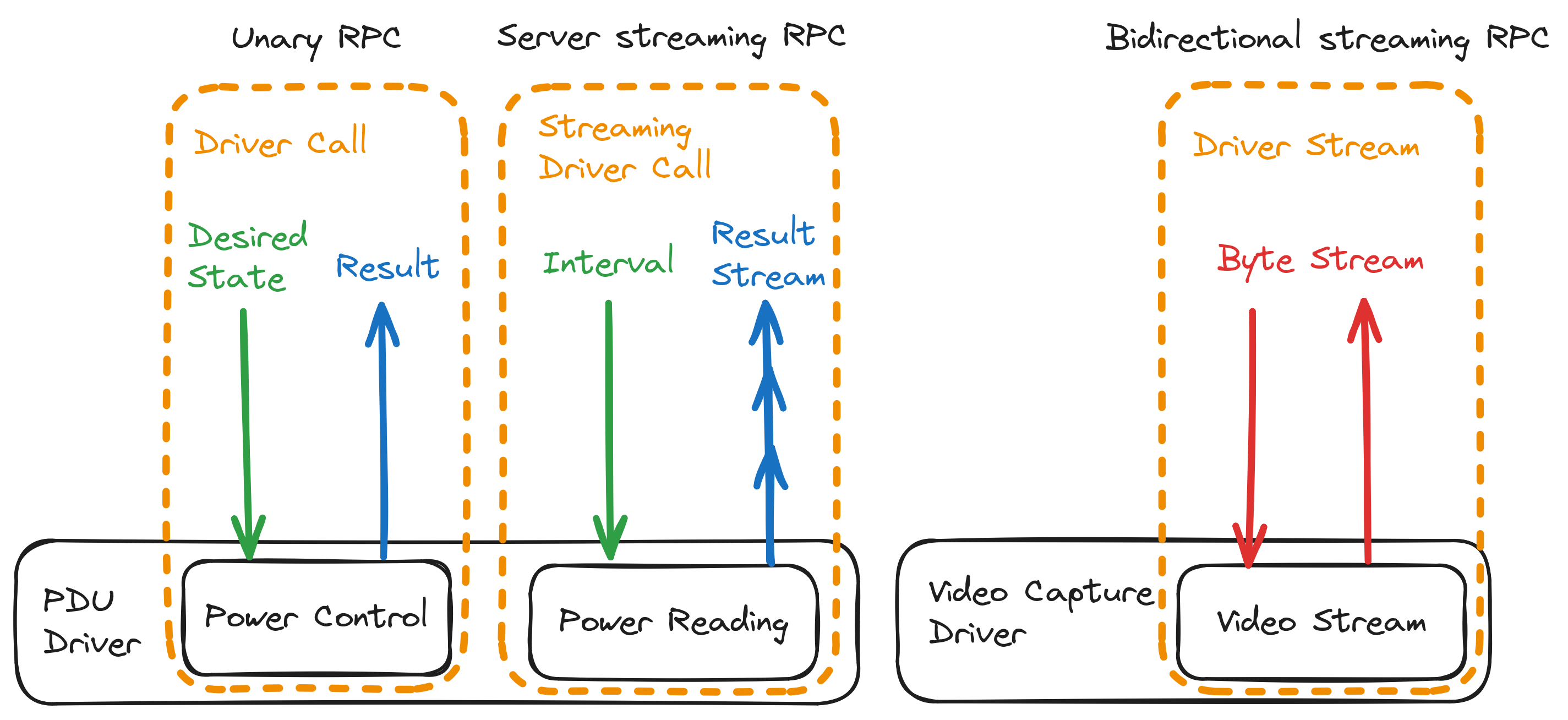Warning
This documentation is actively being updated as the project evolves and may not be complete in all areas.
Internals¶
Architecture¶
Jumpstarter consists of primarily three components, the control plane (Controller and Router) running inside a kubernetes cluster, the Exporter running on dedicated Exporter Hosts or developer machines (for local development workflow), and the Client interacting with the Exporter.
The Controller handles inventory/lease management and access control, and stores its states as kubernetes CRDs. The Router provides a rendezvous point for clients to connect to exporters not on the local network. THe Exporter interacts with the Device Under Test with a set of Drivers, and exposes the methods provided by the Drivers over the network. The Client connects to the Exporter either directly, or over the Router, and calls the methods provided by the Drivers to perform actions on the Device Under Test.

RPC¶
Jumpstarter in its essence, is a RPC framework for Clients to call methods provided by Drivers. Drivers can expose three styles of RPCs, Unary, Server streaming and Bidirectional streaming, which are implemented with their counterparts in gRPC, see RPC life cycle for an in depth introduction to these RPC types.

On top of Bidirectional streaming RPC, Jumpstarter also implements a generic byte stream interface, similar to TCP, for tunneling existing protocol (e.g. SSH) over Jumpstarter.
Router¶
The Jumpstarter Router is just like ngrok or Cloudflare Tunnel, it allows for the Client to connect to Exporters without public IP addresses or behind NATs/firewalls, by tunneling a byte stream over Bidirectional streaming gRPC.
